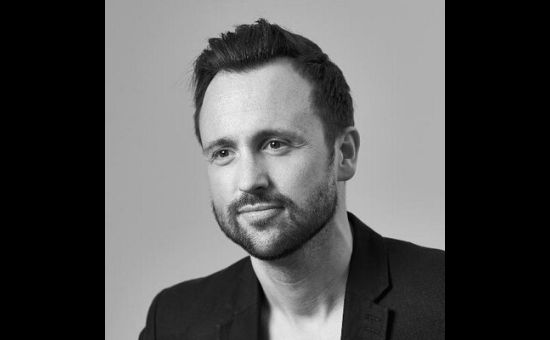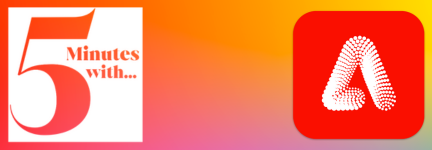
5 Minutes With… Will Pyne

Will Pyne set up Holler with co-founder James Kirkham back in 2001, creating digital youth-centric campaigns back when Facebook was just a glint in Mark Zuckerberg’s eye. Thirteen years later, Holler is one of the world’s best known digital agencies and, now part of the Leo Burnett family, its global presence stretches from London to Silicon Valley – and a newly announced office in Dubai means that world domination is pretty much inevitable. Not bad going for an agency started by two uni mates just two years after graduation. LBB’s Laura Swinton caught up with Will to revisit Holler’s beginnings and look to the future – and to find out what advice he has for the ad industry’s young, aspiring entrepreneurs.
LBB> How did you and James meet – and what is it about your personalities and the way you work together that made you think ‘yup we should set up a business together’ and that’s allowed you to grow the agency?
WP> I met James in art class at school. My opening (and sarcastic) gambit was ‘Nice painting, mate’. It’s apparently how all the great partnerships begin; with pure mickey-taking. But even back then we aligned on some pretty key values: tackling most things with a dose of humour, not taking ourselves too seriously, and understanding that what we do isn’t THE most important thing in the world. Having a good balance of ambition and humility. Preferring candour over bullshit (there was a lot of bullshit in art college I seem to recall). This stood us in good stead when we started Holler as 23-year-olds. Our outlook was: What’s the worst that can happen? Youthful chutzpah, you could call it.
LBB> You founded Holler just a couple of years after graduating from university – what led you to take that step? And what was that experience like, setting up an agency with little experience? How did you make it work in the early days?
WP> We were both working at Hard Reality (Part of Leo Burnett) as creatives in 2001. A London print design company wanted to invest in us, and we wanted to go it alone; the timing worked. We spent the best part of three years working in picturesque Dalston in Hackney, regularly dining out on bush meat in the local markets, and being shot at by local kids with air rifles who lived near the office. A textbook entry to the world of advertising.
LBB> And what advice would you give to any young‘uns thinking of setting up their own agency or creative / digital company?
1. Get investment from someone – make someone with access to cash believe in you.
2. Be clear what your purpose is. Why do you get out of bed in the morning? Why does your company exist?
3. Be prepared to work hard. And then harder. And then harder still. Talent is worthless without grit.
LBB> And which were the projects that you feel really ‘made’ Holler what it is?
WP> With Channel 4 we prized open a big door for Holler. They were our first big paying client and the client that gave us the opportunity to work on Skins, which became famous for being the show that got under our skin before it was even screened. Being the first agency to market a TV show using social media (and before the days of Facebook, Twitter et al) stood us in good stead. We also made a short form video content series for Film 4 called Movie Rush which was ahead of its time as well as innovative cross-platform projects like Year Dot, an education experiment where teenagers lived their lives out online, harnessing social media to help them achieve their goals. Channel 4 are a brave company, Holler has always been a brave agency; it was the perfect opportunity to apply our strong creativity to innovative forms of communication. All of these projects helped shape our reputation as a truly contemporary agency that innovates as well as making great creative work.
LBB> Holler recently announced a new office in Dubai – as I understand it, to capitalise for the growing appetite for digital and mobile in MENA. What are you most looking forward to about getting Holler established in the region? And what do you think the key challenges will be? Are there any particular clients that you’re launching the office with?
WP> Having successfully carved out a place within the Leo Burnett Group in London, the natural place to replicate this success was in other Leo Burnett territories. Chicago came first, followed by Silicon Valley, and now Dubai. They all serve a slightly different purpose rather than attempting a carbon copy each time. What they try to do is offer the kind of creative social and mobile expertise that’s served Holler so well in London, dovetailing perfectly with the local Leo Burnett offering. Dubai and MENA is a fertile and fast developing market, with plentiful opportunity to create the kind of work we’ve become known for in the UK. Growth in social and mobile is huge, and growing as fast as anywhere. Culturally and creatively it’s the perfect place for us to apply the Holler principle of making stuff people actually care about. We’ve already started working with McDonald’s and Du, and we’re aiming for a good mix of local and multi-national clients.
LBB> We’ve really enjoyed watching Holler’s Red Bull work over the years – why do you think Red Bull as a brand and Holler have sparked it off creatively?
WP> Like Channel 4, Red Bull are innovate and set their own path. They’re not interested in what everyone else is doing. They’re shared values that have led to a symbiotic relationship. I think projects like Red Bull Cliff Diving and Imaginate are testimony to this, both approaching communication in a fresh way and writing new rules.
LBB> The work you’ve done with Jura is also interesting – both the Google map project from a year or so ago and the more recent interactive campaign. What are the creative challenges of bringing a brand or product usually associated with heritage and tradition into the digital/mobile space?
WP> The whole sector is steeped in tradition and that’s often its Achilles’ heel. Jura recognises its heritage but approaches marketing in a fresh, youthful way. They act like a plucky David taking on Goliath, the way a challenger brand should. The work we’ve done often challenges the status quo, and gets Jura’s followers behind its cause. Jura Lost Island was the perfect example of this, acting quickly to jump on an opportunity to take on Google who’d removed the Isle of Jura from its map.
LBB> This summer Holler was involved in creating a TV show for London Live – what was the experience like? Is TV (or TV-type content) something you want to explore more of?
WP> We’ve done a fair bit of spec work for TV over the years. That’s the way it works. Every now and then one will hit. We tend not to think about it as a TV idea first and foremost though; it’s content that in the end is executed perfectly for whichever channel it’s destined for. Regardless of TV, online and so on, first and foremost it has to be a good idea, so from that perspective Ctrl Freaks was like any other project that we do. We worked with Cybersmile to tackle cyber bullying from a different perspective. We wanted to change people’s perception that cyber bullying isn’t a real thing, and get them to understand the consequences of ‘words on a screen’. It was very much a hands on experience, even shooting parts of the show in the Holler office.
LBB> And which recent projects have really resonated with you and why?
WP> We’re all hugely proud of #LikeAGirl for P&G Always which has been picking up some much deserved recognition and is the perfect example of collaboration within the global Leo Burnett Group. It’s probably had a bigger global impact than any other project Holler has worked on. We’re doing some interesting work with Logitech brand Ultimate Ears, for their UE Boom product involving a naked cyclist and a pogo athlete, which is a tease if ever I’ve heard one. And we’ve just run the inaugural Holler Transmission, the first in a series of events that looks at wider topics, unravelling the pillars of modern culture. The aim is to generate useful debate and content by talking to the people that matter. Working with influencers to facilitate public discussion around subjects lots of us are passionate about is something Holler is naturally placed to do.
LBB> Who are your creative heroes and why?
WP> Stefan Sagmeister for his anti-buzzword candour. Jon Ronson for his fascination with oddball human beings. Shane Smith for bringing us the Vice lens through which to peer at the world. Dave Trott for continually reminding advertising what’s important. Jim’ll Paint It, who needs no justification.
LBB> 2015 is just around the corner – what does next year hold for Holler?
WP> 2015 is shaping up. On the global front we hope to open shops in two more territories, hopefully with some strong growth in Dubai. In London we’ve got three or four top drawer creative opportunities on the table as we speak, all set to launch in 2015. We’ve picked up some great momentum this year, but we need to build on it. Over the last few months, we’ve made a big point of hiring some of the best in the industry; talent that knows what success looks like, so we’re set up nicely for a stellar year. Fighting talk.












